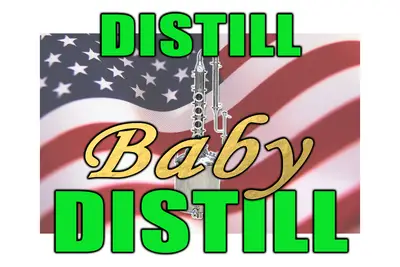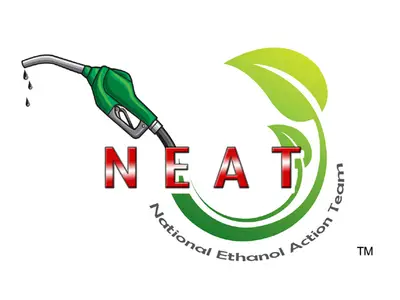Don't Be So Fracking Stupid, Ethanol Is The Smart Choice!
 |
Let's Get Real Clear on Ethanol Fuel - Politically and Socially
 Marc Rauch |
Author of THE ETHANOL PAPERS
Exec. Vice President/Co-Publisher
THE AUTO CHANNEL
All negative comments about ethanol fuel are incorrect. They are either lies, exaggerations, or myths. They were mostly invented by the petroleum oil industry.
Ethanol doesn't harm engines, it cleans engines. It doesn't suck water out of the air, but it will absorb water that naturally forms because of condensation. Gasoline can't do this so people have to resort to using engine additives that can cost as much as 2 or 3 gallons of gasoline. All liquids are corrosive, especially water. However, ethanol is less corrosive and compatible with more types of rubber, plastic, and metal than gasoline and aromatics. BTU values (energy content) are irrelevant when discussing internal combustion engines. Ethanol use does not affect the availability or price of food.
If someone is disseminating negative information about ethanol fuel they are WRONG! I don't care who they are, where they went to school, or who they know; there are no negatives to using ethanol fuel.
Why did the petroleum oil industry invent lies and myths about ethanol, and continue to spread them to this day?
They did this because ethanol (and nearly any alcohol fuel) represents crippling competition to petroleum oil, and not just as competition as engine fuel products, but to the use of petroleum in every other aspect of life, for example: plastic packaging, printing inks, and cosmetics.
Has the petroleum oil industry always spread lies about ethanol?
No, for many decades, some of the largest oil/gasoline companies marketed ethanol-gasoline blends outside of America as being cleaner, safer, healthier, more powerful, and less expensive than any ethanol-free gasoline, including their own. They also promoted the ethanol-gasoline blends as being appropriate to use in general aviation and boats.
In addition, some oil/gasoline companies, such as BP, currently own ethanol production facilities in Brazil where ethanol-gasoline blends in excess of E15 have been mandated since the 1970s.
What did the original inventors of the internal combustion engine (ICE) and original automobiles think of ethanol?
The first internal combustion engine was invented by Samuel Morey in the 1820s. The fuel used was alcohol based. Ethanol is alcohol. Nicholas Otto's first automobile in the 1860s was powered with an alcohol-based fuel. Henry Ford's first attempt at an ICE vehicle (the quadricycle) was powered by an alcohol-based fuel. Ford's Model T, the car most associated with jump-starting the automobile revolution was designed and built to run on ethanol or gasoline. Ford's Fordson farm tractor was also designed and built to run on ethanol or gasoline. General Motors' top scientists (the same team that was ultimately responsible for inventing leaded-gasoline) believed ethanol to be the fuel of the future. Harry Ricardo, Britain leading engine designer favored ethanol over gasoline. Rudolf Diesel, inventor of the eponymous diesel engine in the 1890s used peanut oil to power his engine, not the eponymous diesel fuel.
If ethanol is so great why did gasoline and petroleum diesel fuels become America's primary fuels?
In order to help fund the Union efforts in the American Civil War, the government levied stiff taxes on alcohol production. Within two years, the taxes grew to $2.10 per gallon, making the retail price of alcohol at least $2.25 per gallon. This was roughly equivalent to one week's average pay. In addition to using alcohol (ethyl alcohol) for beverage purposes, it was used as a cooking and heating fuel. Consumer's were forced to start using a much less expensive fuel, kerosene, that was refined from petroleum oil. The government only taxed kerosene production at 10 cents per gallon, making kerosene about 25 cents per gallon. This put alcohol fuels at a great competitive disadvantage in the United States. Elsewhere in the world, alcohol remained price competitive and was favored for use in many countries, especially those with no known domestic crude oil resources.
The tax remained on alcohol production for 40 years. During this time the age of the automobile began, and the oil companies developed a new use for their product: gasoline, which was superior to their earlier kerosene fuel for engine purposes. Again, because of cost, vehicle owners used the much cheaper gasoline than ethanol. The exception to this rule in America were race car teams who knew they could get more power and speed from ethanol than gasoline. Their specialized use of the fuel made the cost difference irrelevant.
When the alcohol tax was removed in 1907 it made the price of ethanol fuel about equal to gasoline, and it opened the door to Henry Ford and other automakers to specifically use and recommend ethanol fuel.
As engine design and technology improved, it was found that low octane gasoline was insufficient to power high-compression engines. This created a "knocking" or premature ignition problem that robbed vehicles of speed and power, and caused mechanical problems. The gasoline companies could refine a higher octane product, but the projected retail cost was considered way too excessive. The newly affordable ethanol, either alone or in blend with gasoline, tamed the knocking problem.
The need for speed and power in internal combustion engines became critical in the First World War. Ethanol-gasoline blends and costly alternatives were used to fuel the new flying machines, armored tanks, and other military vehicles.
When WWI ended, and America and the world was ready to get back to normal and "roar," the public wanted personal vehicles that could roar with them. They couldn't roar with slow, low compression engines. This created a big problem for oil/gasoline companies, particularly Standard Oil and its offshoot post-monopoly ordered spawns.
John Rockefeller took advantage of the alcohol abolition movement to donate enough money (translated to political bribes) to get the 18th Amendment to the U.S. Constitution (the Volstead Act) passed. With the enactment of "Prohibition," it created the second great obstacle to alcohol engine fuels in America.
When the General Motors' scientists developed a patent for a gasoline with tetraethyl lead (TEL), Standard Oil and Dupont Chemical partnered with GM to produce, license and sell leaded-gasoline for use in all spark-ignited internal compression engines (gasoline-powered engines).
Although the General Motors' scientists remained in favor of ethanol as the "fuel of the future", it became apparent that their patent on the new formula could be worth billions of dollars in the coming years. With Pierre Dupont at the helm of GM, and as GM's largest shareholder, Dupont realized the move to their patent-protected fuel (away from public domain ethanol) would be a treasure-trove for his family, his GM holdings, and his chemical company.
Over the next 13 years, until Prohibition was repealed, General Motors solidified their position as the world's number one automaker, Dupont solidified their position as the world's number one chemical company, and Standard Oil with its spawned companies solidified their position as the world's number one oil conglomerate. The American Petroleum Institute was founded shortly after by Standard Oil/Rockefeller, and the invention of lies, myths and gross exaggerations against ethanol (and other competition) went into high gear.
Sadly, due to greed and political bribery (not good old free market capitalism or product superiority), leaded gasoline became America's preeminent engine fuel. The problem with tetraethyl lead (TEL) is that it's highly poisonous. Getting TEL on your skin or briefly breathing the fumes can cause mental illness and death. For this reason, TEL became known as "looney gas." Several people working at the Dupont factories that produced TEL did indeed become very ill, and some died. Ethanol, on the other hand, is not poisonous to the touch - people regularly use ethanol (ethyl-alcohol) to rub on their bodies, and moderate inhaling of ethanol fumes will not cause mental illness or death. Natural ethanol is the alcohol used in alcoholic beverages and food ingredients.
Eventually, the public and health officials had enough of the damage caused to humans by TEL, and its use was significantly banned in America and other parts of the world, although not entirely. The replacement for TEL was another oil industry choice: Methyl tertiary-butyl ether (MTBE). MTBE was found to also be poisonous to humans, and it passed into drinking water supplies. When MTBE was banned another solution was needed. Only two options existed, the increased use of "aromatics," which consists of poisonous substances including benzene, toluene, and xylene; or ethanol. Ethanol was less expensive, safer, and healthier to use, and so the oil industry chose to use ethanol. The government did not choose ethanol as the oxygenate additive, the oil industry chose to use it. The government merely mandated the use of a renewable fuel, not what that fuel had to consist of."
America could have saved the lives of millions of humans and animals the world over if they banned the use of leaded gasoline in the 1920s and allowed the use of ethanol fuel, as was favored by top scientists and automakers of the time.
The problem that the oil industry faces now, since the advent of the Renewable Fuel Standard is that they are trying to push the ethanol-genie back in the bottle by using professors and other "credentialed" individuals to lie about ethanol, just as the tobacco industry used unscrupulous doctors to tell the public that tobacco smoking was not harmful.
The recent Tyler Lark, et al., study meant to denigrate E15 and forestall Joe Biden's waiver on its use, is nothing more than a rehashing of the extremely debunked, oil industry-sponsored reports released by David Pimentel and Tad Patzek almost 20 years ago.
All spark-ignited internal combustion engine vehicles on the road today, regardless of age or manufacture can safely, efficiently, and economically use ethanol-gasoline blends that are significantly higher than E10 and E15.
If E10, or E15, or E30, or E85 fuels are not perfect, it is because there is gasoline in the blends.
SEE ALSO:
• The Real Story On Electric Vehicles
• Ethanol-Basher Scores 100%...in Idiocy
• Open Letter to William T. Alpert on His Fraudulent Anti-Ethanol Article
• California Forces EV Adoption, But Begs For People To Not Charge Their Electric Cars
• Open Letter to Bob Vila About Ethanol - Yes, That Bob Vila!
CLICK HERE to Help The Auto Channel Keep ETHANOL TRUTHS Discoverable
 |


